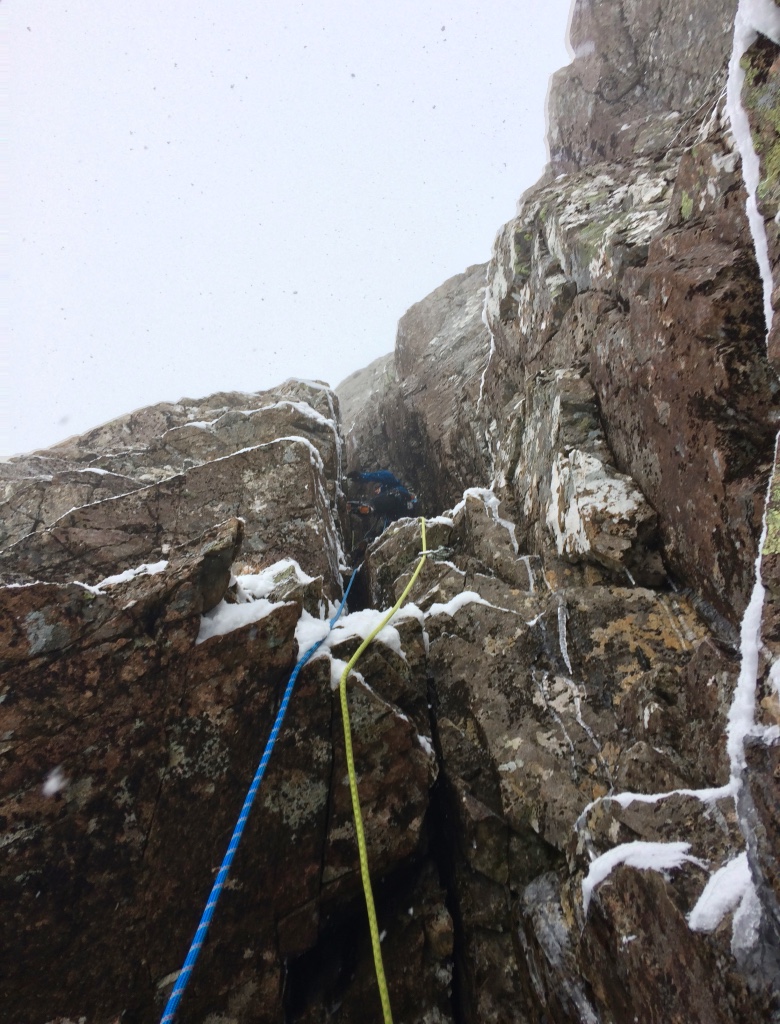07775 853 348

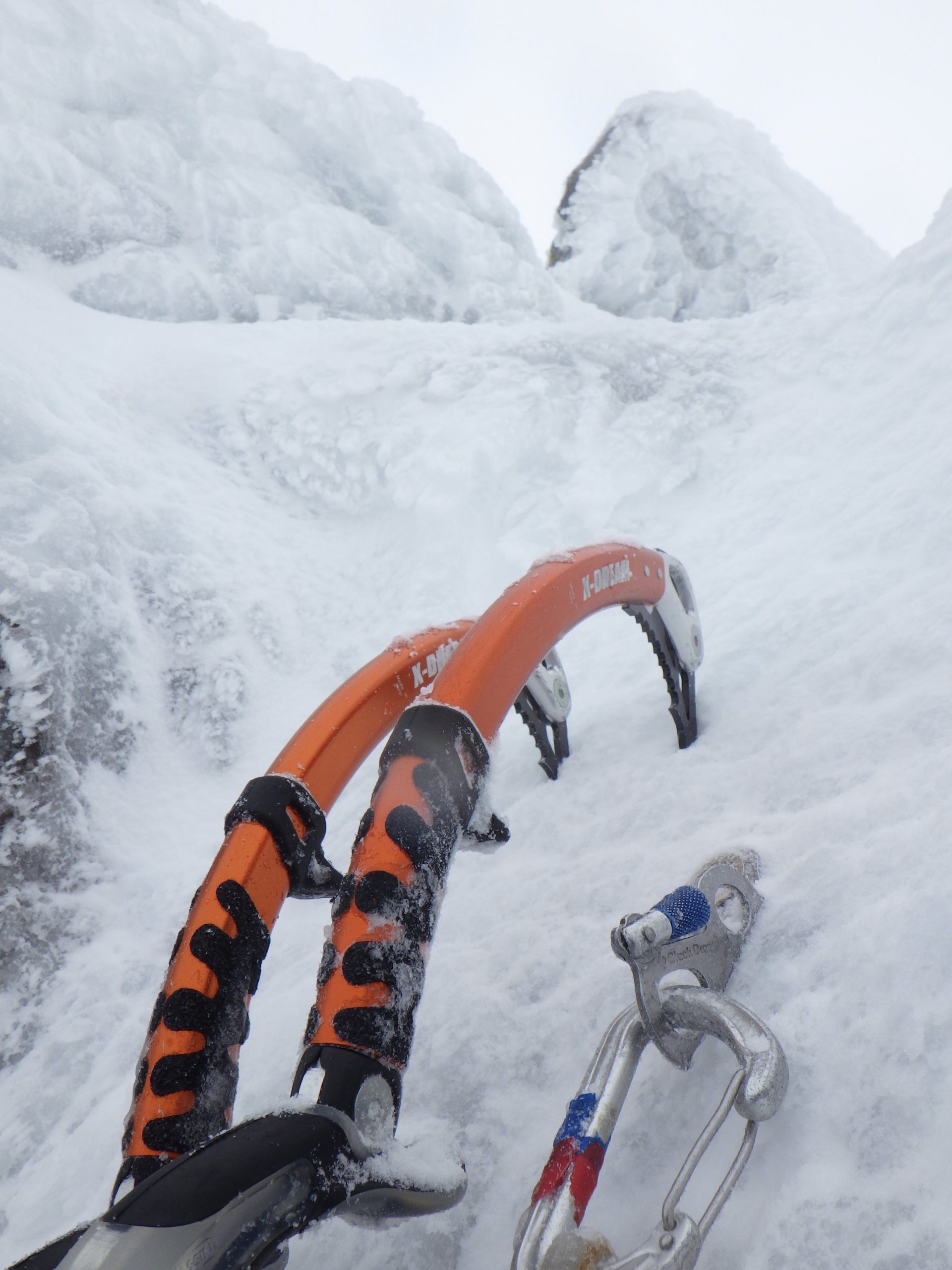
Winter climbing can be an all encompassing and intimidating activity, and can very quickly go from type 1 to type 2 or 3 fun. So we have come up with a list of winter climbing tips, that will help you enjoy winter climbing a little more. So, here is our list of winter climbing tips.
A sharp set of ice axes are a must when you go winter climbing. It means these will glide into ice and neve, and take less effort to get the correct placement. The less effort it takes, the more energy you can conserve for when it is needed further up the route. It will also give you more accurate purchase when placing them on small edges (i.e. dry-tooling/mixed climbing). Make sure to sharpen them after each day of climbing.
As with ice axes, you also need a sharp set of crampons. Most important are the front points, but don’t forget to sharpen the secondary points. The front points and secondary points will work in harmony, unless you are climbing technical mixed climbing. This is where you tend to use front points only for sections of a climb. Check your front points after each day of use, and sharpen as necessary, as with the secondary points. All other can be checked at the start of each season. If you are unsure as to how to sharpen your ice axes, here is a video on sharpening your ice axes.
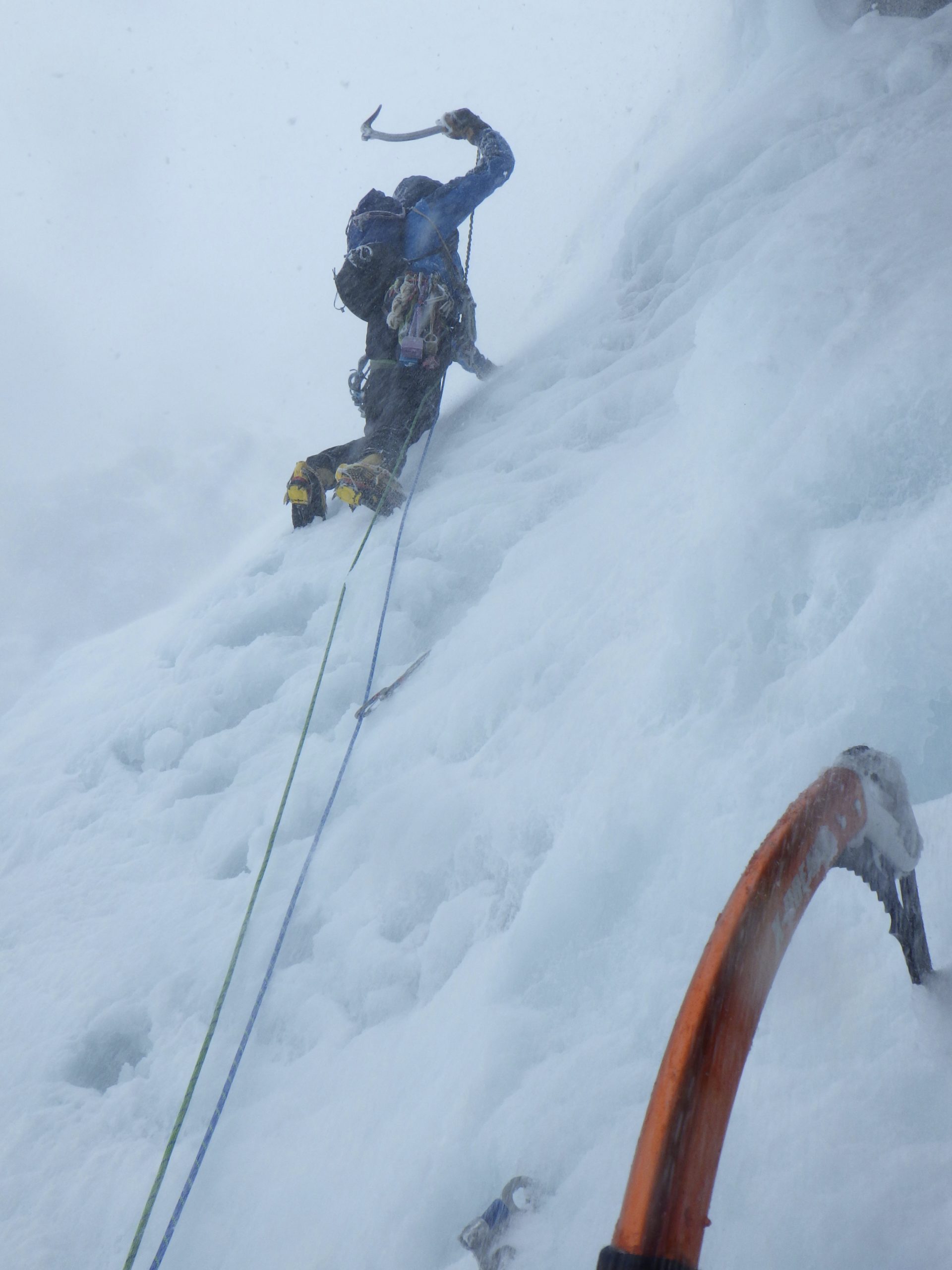
You need a comfy pair of winter boots which are compatible with your crampons. These need to keep your feet dry, warm, and be agile for when you are trying to do smaller intricate movements when climbing. Choose something that fits your foot shape, and is definitely worth going to a shop for to get fitted. There are lots of different brands on the market. So do your research and figure out what performance you are expecting from a boot. If in doubt, speak to someone who has some experience, look at reviews, speak to one of the shop keepers or ask the question on social media. Just be aware, what works for one person, may not work for someone else.
Make sure you have enough layers on/with you. When you start the approach walk, start cool or cold, you will soon warm up. Have spare socks and thermal top for when you arrive at the climb. If you are anything like me, I get warm very quickly, and sometimes sweat on the approach walk, even through my feet (horrible thought!!). When you put on a dry thermals and dry socks just before you set off on your climb, it feels like a different world. Some great advice I was given by a guide. Slightly damp socks and thermal will cool you down very quickly as you are hanging on your belay stance for an hour or two whilst your friend is leading their pitch.
Make sure you take a belay jacket and enough spare gloves depending on the weather conditions. I grade my winter days out on how many pairs of gloves I used. Some days I get away with using 2-3 pairs, others it can go up to 6.
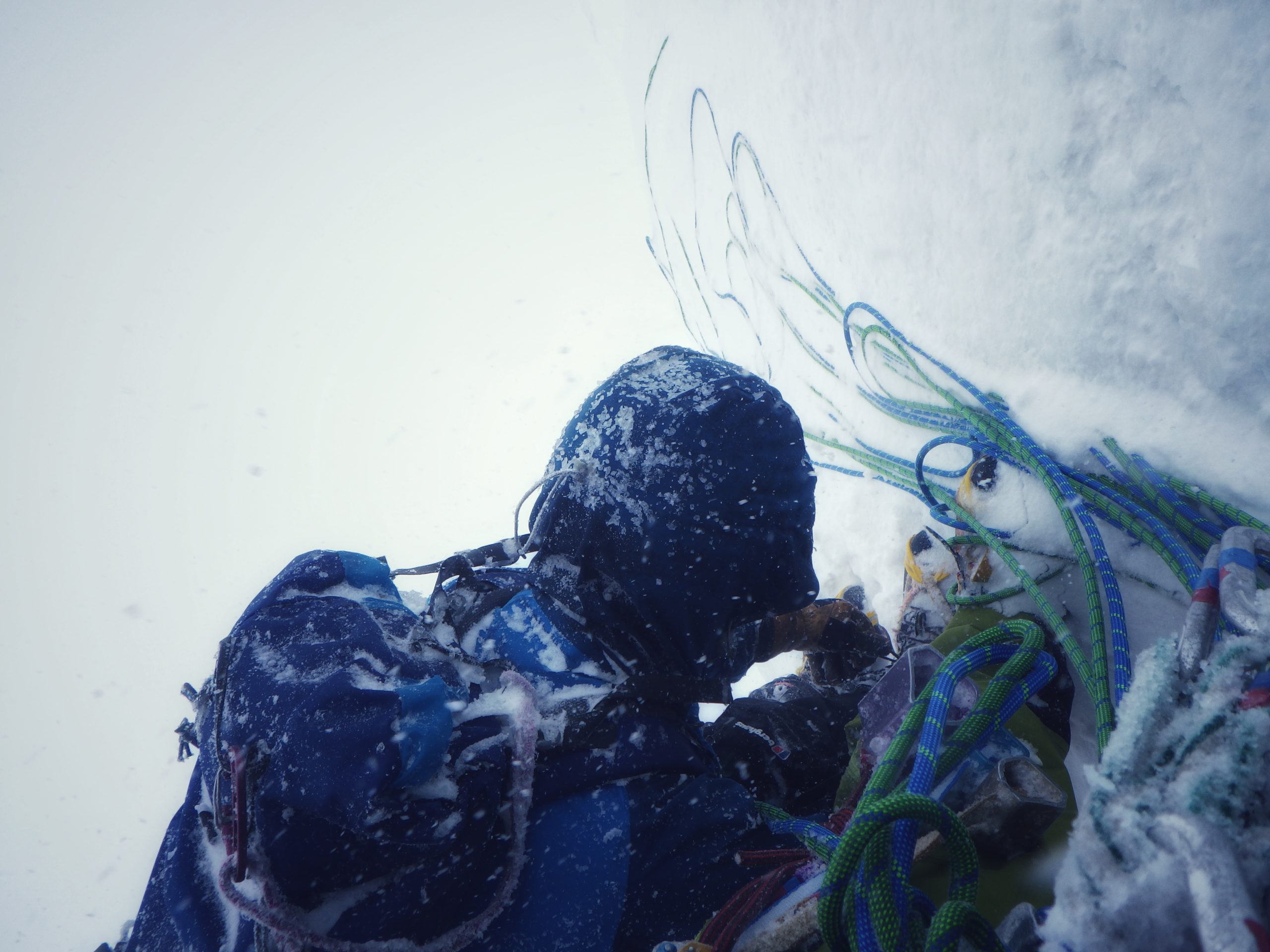
It is very tempting when going winter climbing to carry everything, including the kitchen sink. It is a balancing act of weight and safety. Do you take 1 or 2 litres of water? That is an extra kilogram, plus the weight of the water bottle. How much food do you take? Do you take an emergency shelter? How much gear do you take?
This is so personal, and depends on your experience, your goals, the weather forecast, your ability to improvise, the route grade you are intending to climb, etc… These are questions you could try to answer yourself. The more inexperienced you are, the more equipment you prefer to take, to have a comfort blanket, just in case. The more experienced you are, the more likely it is that you may walk this invisible line of safety and risk. Meaning, you may choose to carry the necessary equipment to complete your chosen project. Leaving at home your emergency shelter, extra food, extra water, extra layer etc… as this all has a weight, going alpine-style. I am in no way advocating this. Through experience you can make this judgement yourself.
In winter climbing your body will use a lot of energy. Winter climbing is very physical. The approach walk in can usually take 2-3 hours, uphill mostly, with sometimes sections of deep snow, which is very energy sapping when wading through it. Then whilst climbing the route you will more than likely carry a rucksack. Your body will be burning more calories as it is trying to keep warm and stave off the cold, when climbing and hanging on your belay stance. Finally, you will have to walk back to the car for 2-3 hours. As well as the physical energy used throughout the day, adrenaline and the thinking whilst climbing will also burn a lot of calories. Make sure to eat lots the evening before you go out. Start the day with a good breakfast, and have lots of snacks out on the hill. And don’t just eat sugary foods when out on the hill. These can work for instant energy, but you will have a slump.
Hydration when out in the hills in winter is so important. This starts the day before. Drink lots the day before, make sure you are fully hydrated before setting off in the morning. Although tea and coffee are liquids, these encourage the body to get rid of some of its fluids. You cannot beat just water. Be aware that being out in the cold, you may find it hard to want to drink. So make a warm juice drink (WARM RIBENA DRINK), but also bring some water. If you are likely to walk past a stream, fill up or use it as a hydration stop. If dehydrated, it can affect your judgement. In winter you need to be able to make lots of sound decisions, as the winter environment brings lots of its own challenges.
There is no right answer here. In winter climbing you are already taking so much more kit for a walk, than you would going rock climbing. So it can be tempting to leave kit behind. Depending on your goals, think about what you don’t need, but you never know. If I’m looking to climb a mixed route, I will always bring a few ice screws just in case. As if I’m looking to climb an ice route, I will always bring some rock gear. The only time I and most other ‘sane’ climbers will stop progressing on their chosen route, is when the difficulty of the route is close to their limit, and they have no protection to use on the terrain they are climbing.
An amazing piece of protection, designed by DMM, THE BULLDOG, which can be used in iced up cracks, or frozen turf. I carry one on my rack in winter, and these are my ‘get-out-of-jail-free’ cards. When nothing else fits, or you are at the top of a climb where there is only frozen turf, these are a saviour. You may not use these a lot, but when you do, you will be glad you carried it.
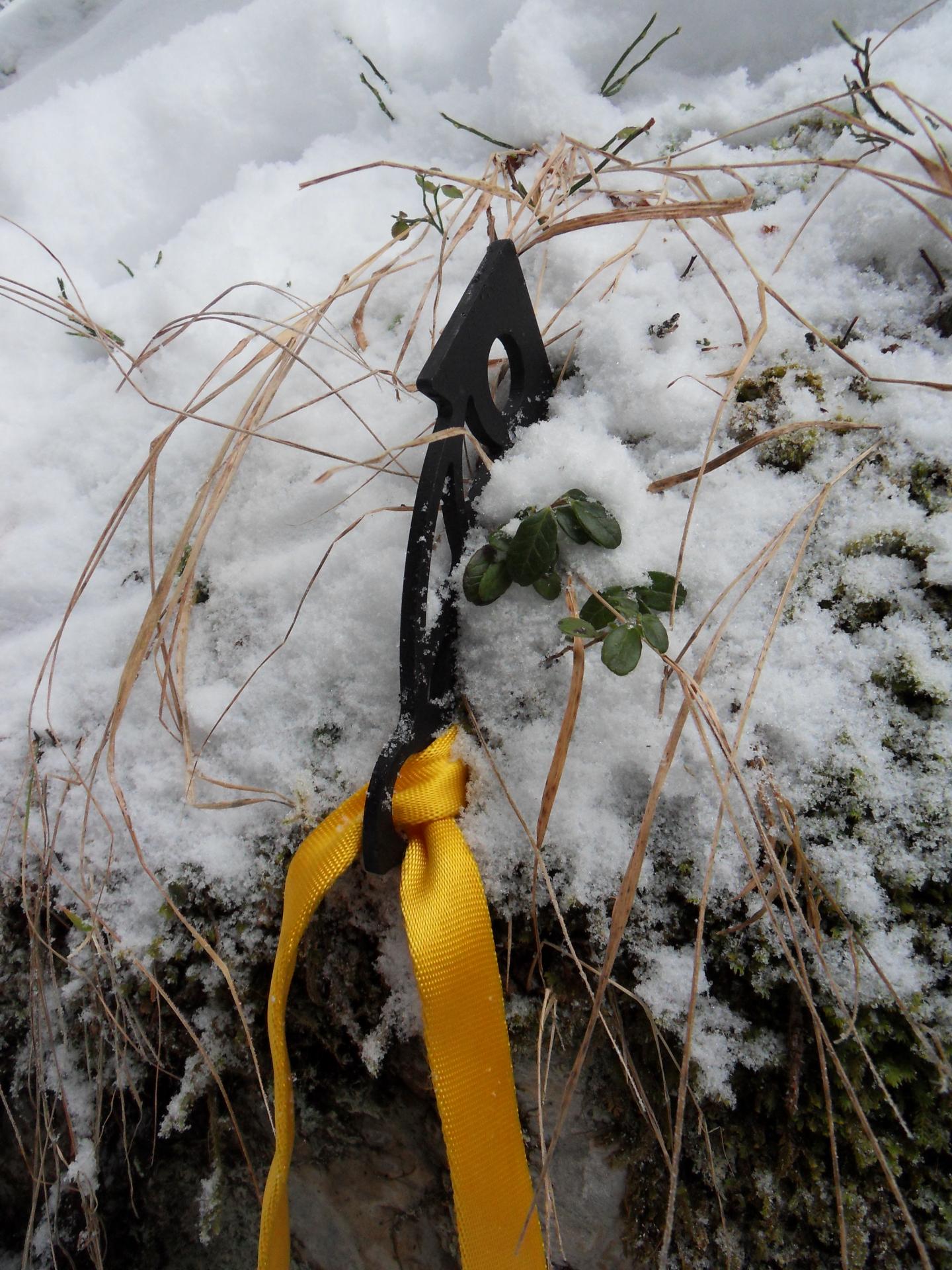
A map and compass may sound so obvious, but I have seen many people out with just a map, in whiteout conditions. Or relying on their phone, or an electronic device for route finding. Batteries don’t last as long in colder conditions, and when caught in a whiteout, or bad visibility, a map and compass will be your life line. Again, just having a map and compass will not give you safety, unless you are comfortable to use these in all conditions. Winter climbing/mountaineering deserves a lot of respect, so be prepared and confident in your ability.
If you are looking to take winter climbing seriously, you need to be able to analyse weather forecasts well. And understand the effects of the weather on the current snowpack. The forecast is only a forecast, and is not a given. Weather forecast are fairly accurate nowadays with all of the technology, but it is not a given science. Meaning that there may be variations in wind direction, precipitation levels, etc… If you understand the effects of these on the landscape and snowpack, then you are able to judge, to a certain extent the conditions of the snowpack.
The avalanche forecasts are also a very good source of information. Providing information on the current snowpack conditions in different locations, but also how the forecast may effect conditions. Again, these are forecasts, and not a given. As human beings we have a certain amount of information, and with that we are judging the safest path to our destination. But there is still a gap in our knowledge, and are not able to predict everything. Here is a link the information on AVALANCHE SAFETY and AWARENESS.
So, when deciding where to go, have a plan A, B, C, D, etc… and don’t fall into the HEURISTIC TRAP of feeling forced to your first objective. Be flexible. The mountain will be there tomorrow, just make sure you are.
Have fun winter climbing, and stay safe.
